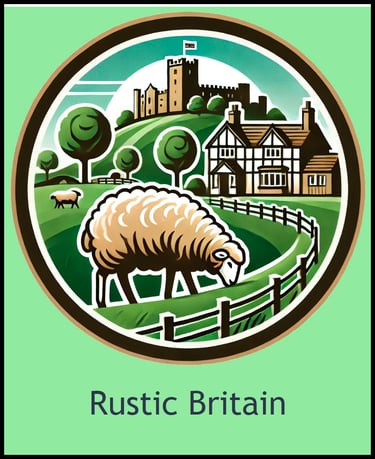The Black and White Villages of Herefordshire
Step back in time and explore the picturesque heart of Herefordshire, where timber-framed houses stand as silent witnesses to centuries of history. Our latest blog post by Dawn Moore delves into the enchanting Black and White Villages, tracing their origins from medieval market towns to the idyllic hamlets we see today. Discover the unique architectural styles that define these settlements, and learn how the region's geography – from fertile river valleys to rolling hills – shaped their development. We'll guide you through some of the most charming villages, revealing their hidden stories and offering tips for your own exploration. Get ready to be captivated by the timeless beauty and historical richness of Herefordshire's Black and White Villages!
Dawn Moore
3/20/20257 min read
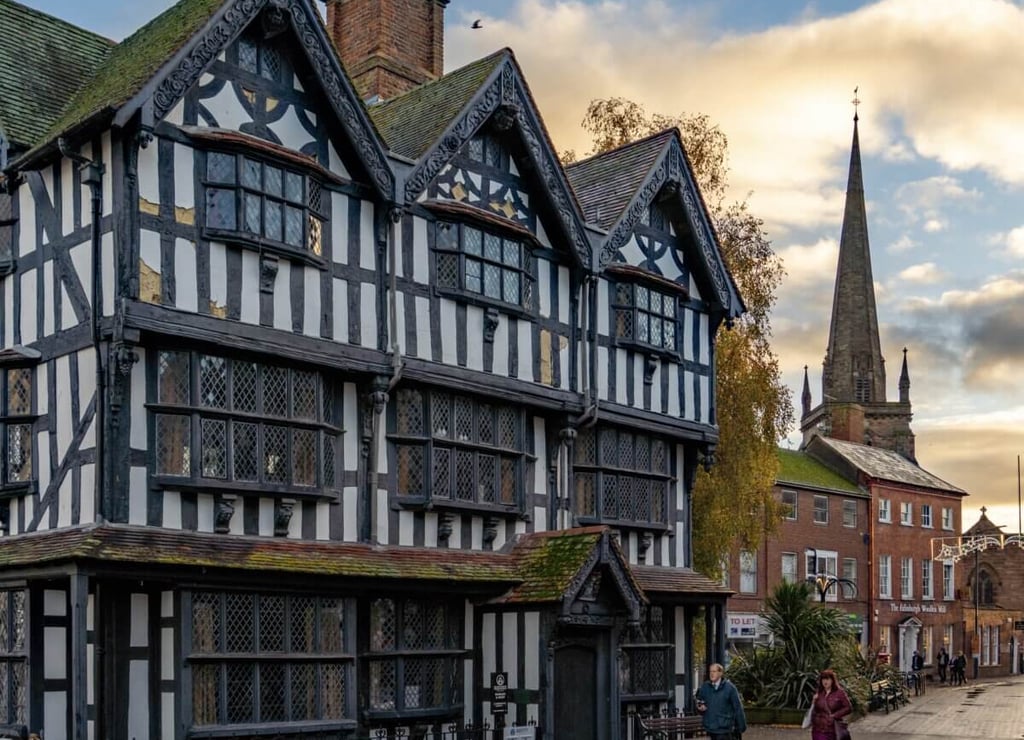

The villages are nestled within the verdant embrace of Herefordshire's rolling hills and fertile river valleys. This is a place where time slows, and the rhythm of life aligns with the gentle flow of the River Wye and its tributaries. Imagine a tapestry woven with fields of golden wheat, lush meadows dotted with grazing sheep, and ancient woodlands that whisper tales of centuries past. It's within this idyllic setting, where nature's beauty reigns supreme, that the enchanting Black and White Villages have taken root and flourished.
North Herefordshire's Black and White Villages are an absolute delight. The timber-framed architecture is brimming with character, and the villages are peppered with cosy pubs and tea rooms, art galleries and village shops. Make time for riverside picnics, country walks and meandering bike rides. Their churches, too, remind us of the long history of this area, containing records of people and events going back to Domesday and beyond.
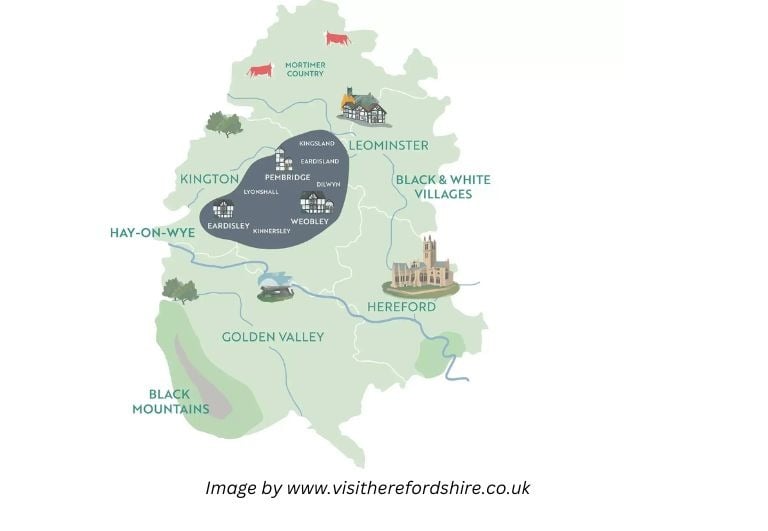

Herefordshire is famed for its cider, and a visit in spring means you'll be greeted by breathtaking apple blossom displays. Autumn, however, is when the magic truly happens. It's harvest time, and a fantastic opportunity to tour our cider producers and see the cider-making process firsthand.
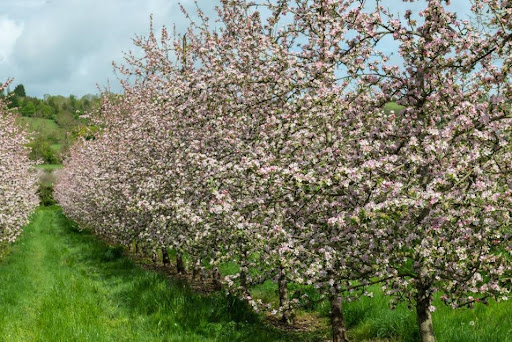

The Black and White trail itself is easy to navigate and is signposted throughout with brown and white "tourist" signs. The villages included are Leominster, Dilwyn, Weobley, Sarnesfield, Kinnersley, Eardisley, Kington, Lyonshall, Pembridge and Eardisland. Although not officially on the trail itself, the village of Kingsland is well worth a visit.
Kington
Lying in the Arrow Valley in the shadow of the imposing Hergest Ridge, Kington is a tiny town with a big character. Explore the constellation of art galleries, shops and cafes lining its historic streets, then lace up those hiking boots. A hiker's dream, Kington is surrounded by tempting routes, including Offa's Dyke Path and the Mortimer Trail (which starts here) which both tell of the area's tumultuous past. The town also hosts annual walking festivals.
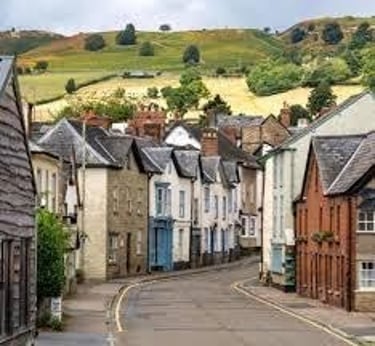

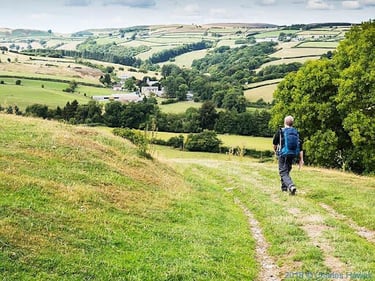
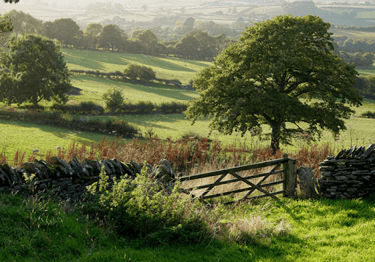




Black and White Village History
Many of the houses and buildings along the Black and White Village Trail are timber-framed – this is, the framework of the house is built from green (unseasoned) oak, and the panels are infilled with lath – woven strips of wood and wattle daubed with plaster, clay, straw or animal dung. Occasionally, panels would be infilled with brick. The timber would be left natural and the panels had lime wash applied, often with natural pigments. Many of the buildings on the trail were built during the 16th and 17th centuries, some date back even further – in Leominster some date back to the 1400s.
The idea of decorating timber-framed houses by painting the beams black and the panels white is a recent one, becoming fashionable in the late 18th century. However, in the 18th century when stucco and stone finishes became fashionable, many of these timber-framed houses had their timbers plastered over. In the mid-19th century, the trend for exposed timber came back and many of these buildings had their plaster coverings removed.
The practice of painting the beams black and the panels white, in part to emphasise the intricate patterns of the timber frame, became established. Recently fashions have changed again and some of these buildings have had paint removed from beams to reveal the natural colouring of the weathered wood, while the panels are limewashed in soft earth tones.
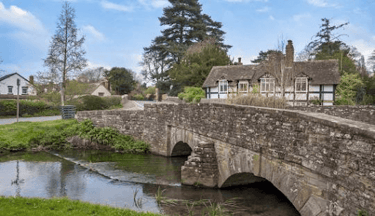
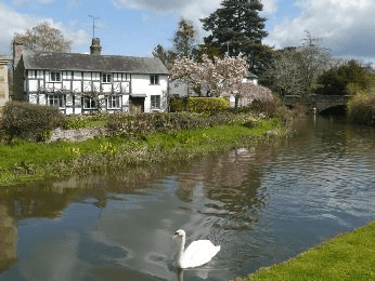
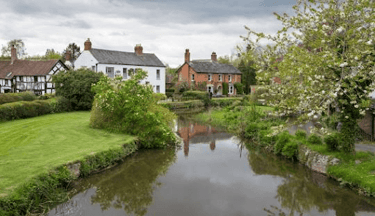
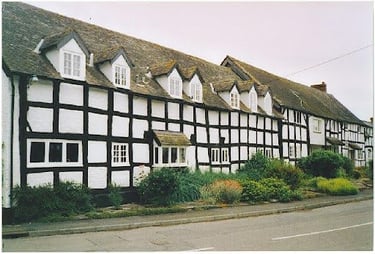




Weobley Pronounced 'weblee', has excellent examples of timber-framed buildings, including cruck cottages and Wealden houses, as well as the place where Charles 1st stayed overnight during the Civil War.
Pembridge
Described as a ‘jewel in the crown’ of north Herefordshire’s black and white trail, Pembridge is one of Britain’s finest Mediaeval Boroughs and has been occupied since before the Magna Carta. Most of the black and white house’s date from the 15th and 16th centuries.
Mentioned in the Domesday Book, Pembridge reached its zenith as a busy market town during the mediaeval period, when it was renowned for its lively and undoubtedly profitable fairs. It was first granted a charter for a market and two fairs in 1239. Pembridge’s proximity to the Welsh Border meant that English wool merchants could come to meet with the Welsh sheep farmers to trade in relative safety - the early 16th century Market Hall still stands in the centre of the village. With the Acts of Union with Wales, during Henry VIII’s reign, and the subsequent tranquillity in the area, Pembridge soon declined as a trading centre.
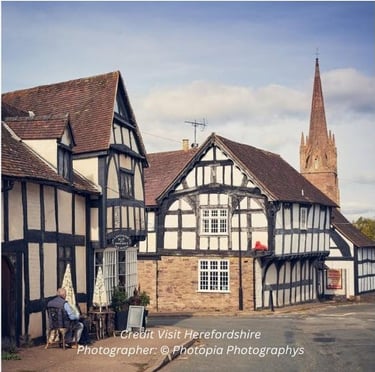

Pembridge is the perfect rural base for exploring the surrounding areas of Herefordshire and Shropshire. It is a wonderful place for walkers and cyclists with Offa’s Dyke, Mortimer Forest, Hergest Ridge and the Long Mynd within easy reach. But there is plenty to see and do if you are not so athletically inclined – there are several National Trust properties nearby, lots of open gardens and many market towns to visit, including the renowned and beautiful Ludlow and Hay-on-Wye.
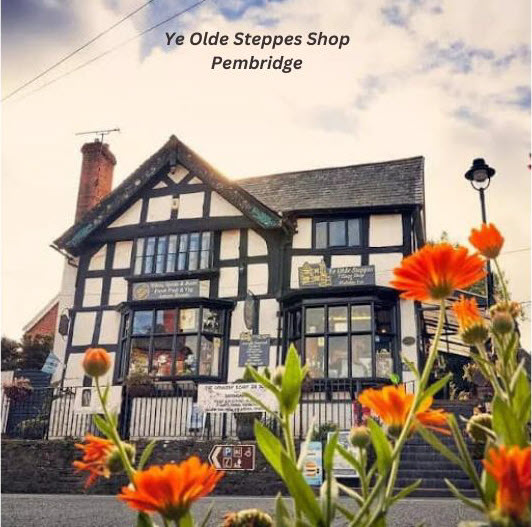

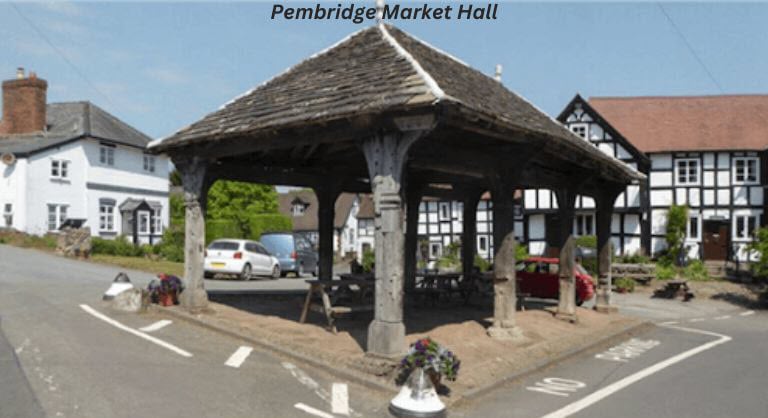

Cobbler’s Cottage
Cobbler’s Cottage is a typical example of a black and white cottage within the village of Pembridge. The owner’s father was born, grew up and went to school in Pembridge and remembers taking the family’s shoes to be repaired by the cobbler, Mr Emrys Vaughan who operated in a shed behind the house during the 1930/40s. My husband John and I therefore decided to call the cottage ‘Cobbler’s Cottage’. We have lovingly restored it to its former glory whilst making sure it functions for today’s modern living.
Cobbler’s Cottage is packed full of medieval charm and cosiness with original beamed walls and ceilings, an inglenook fireplace and warming wood burning stove. The pretty kitchen boasts a Belfast sink and bespoke units and leads down a couple of steps to the more recently added garden room, a light and sunny space from where the well-established and mature cottage garden can be viewed and enjoyed. The inviting sitting room showcases the beautiful inglenook fireplace; and gnarly old beams create a quirky partition from the slightly raised dining area.
The original staircase leads from the sitting room up to a calming landing, furnished with a desk and easy chair, ideal for some quiet reading or catching up on some emails. Romantic bedroom one features a double bed, a pretty picture window and a television. Bedroom two is perfect for older children, with twin single beds and another television. The tasteful and fresh family bathroom is also upstairs and includes a shower over the bath. Outside, the pretty cottage garden is fully enclosed for our canine guests, and thoughtfully provides sun loungers, a rocking seat, dining furniture and a barbecue; not to mention a summer house!
It is set in an area of outstanding beauty with many walks on the doorstep. Modern Pembridge boasts a wealth of cafes, pubs and a restaurant, together with a small village shop to get the necessities, all are within easy walking distance of the cottage. The cottage has off street parking for 2 cars. Visit the website: www.cobblers-holidaycottage-pembridge.co.uk
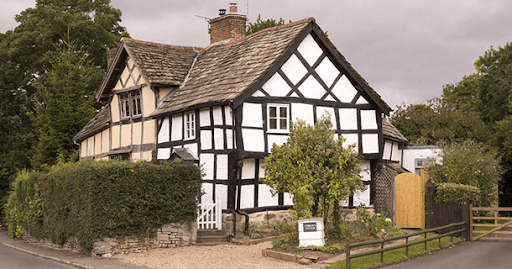

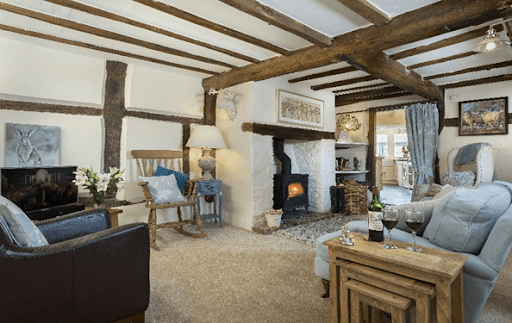

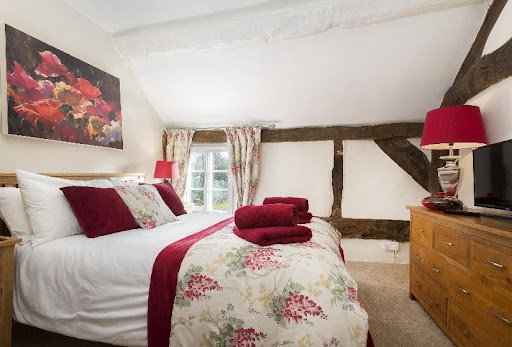

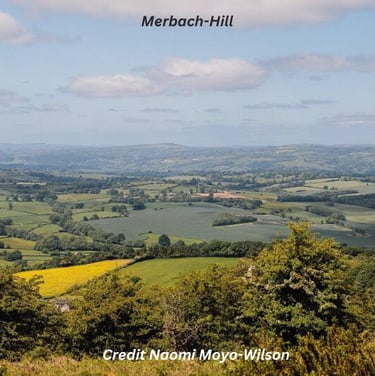
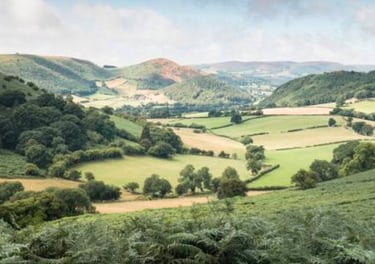
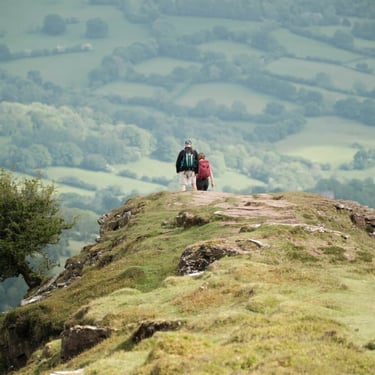
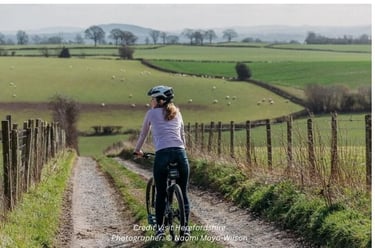
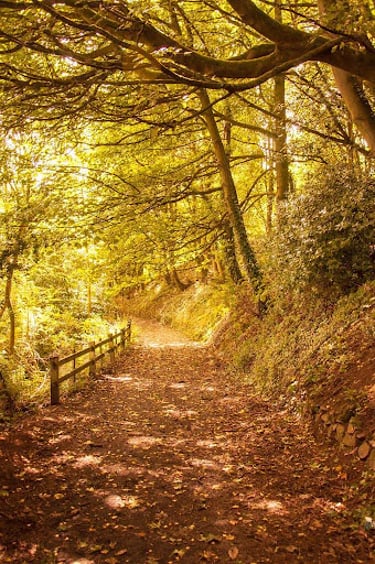





Cider-making in Herefordshire dates back to at least the 12th century.
By the 17th century, cider was considered a more reliable drink than water in some parts of England.
Herefordshire accounts for more than half of the UK’s cider production
Traditional varieties include Dabinett, Kingston Black, Yarlington Mill, and Michelin.
About Dawn
I am a Marches girl, born and bred and very proud of the area in which I live. I came to live in the village of Richards Castle when I was 4 years old when my parents bought a farm in the village. They fell in love with the community and became heavily involved in village activities and my widowed mother still lives here. On leaving school at 18 I worked in a Bank for over 12 ears until I had my children.
In 2000 my husband John and I decided to start our own gift and home decor business. At one time we had four stores in Ludlow, Leominster, Ross-on-Wye and Tewkesbury selling art, furniture and gifts.
We are now retired and have recently finished renovating our home which at one stage was a stableyard – reputedly many racehorses were stabled here.
I love history and reading (I am a big Jane Austen and Agatha Christie fan). I also love my garden and my two adorable labrador cross dogs.
I have lived in Richards Castle for most of my life and have always tried to be involved in the wonderful village community. I really enjoy getting on the stage in our biannual village panto which brings fun and laughter to those taking part as well as hopefully our audience
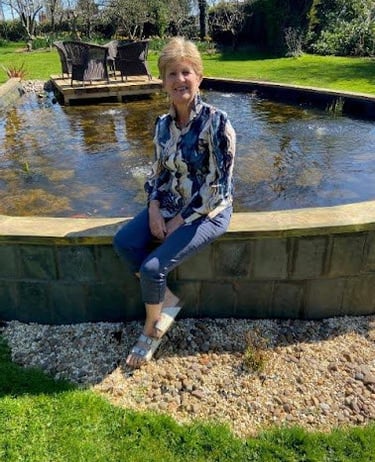

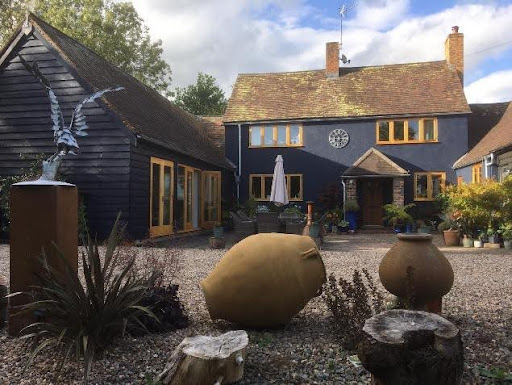

Dawn's lovely home in Richard's Castle
reach us on Social Media
JOIN OUR LIST
info@rusticbritain.com
(978) 412-0019
© 2025. All rights reserved.
